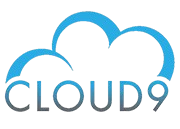Technology is evolving at lightning speed, and with it, the demand for more efficient, secure, and powerful programming languages is on the rise. As a developer in 2025, staying ahead of the curve means equipping yourself with the right tools to build scalable and innovative solutions. Here are some of the most promising programming languages to learn this year:
1. Rust
Rust continues to gain popularity thanks to its strong focus on memory safety and performance. Backed by major players like Mozilla and now widely adopted by companies such as Microsoft and Amazon, Rust is increasingly used in systems programming, embedded development, and even web applications. Its zero-cost abstractions and security features make it an essential language for the future.
2. Go (Golang)
Developed by Google, Go is thriving in 2025 for its simplicity, concurrency model, and efficiency. It’s especially valuable in cloud computing, microservices, and scalable server-side applications. With the growing importance of distributed systems and DevOps, Go is a must-have skill for developers.
3. Kotlin
Initially popularized for Android development, Kotlin has expanded into cross-platform mobile and web development. In 2025, it continues to thrive as one of the most versatile languages, supported by a large community and excellent tooling. Its interoperability with Java ensures it remains relevant for enterprise applications.
4. Swift
Apple’s Swift has moved far beyond just iOS and macOS apps. With advancements in server-side Swift and its role in machine learning frameworks, Swift in 2025 is a well-rounded language for developers targeting Apple ecosystems and beyond. Its clean syntax and safety features make it a favorite among modern programmers.
5. TypeScript
The dominance of JavaScript isn’t fading, but TypeScript has become the go-to option for developers in 2025. Its static typing, scalability, and developer-friendly tooling make it the backbone of modern front-end and full-stack projects. Frameworks like Angular, React, and Next.js thrive with TypeScript at their core.
6. Julia
For developers in data science, AI, and numerical computing, Julia continues to shine in 2025. It combines the speed of C with the simplicity of Python, making it perfect for high-performance computations and machine learning applications. With the growing focus on AI innovation, Julia is a valuable addition to any developer’s toolkit.
7. Dart
Dart, powered by Google’s Flutter framework, is making waves in 2025. It enables developers to build cross-platform apps (mobile, web, and desktop) with a single codebase. As Flutter expands, Dart’s relevance only continues to grow, making it a strategic language for developers focused on multi-platform applications.
8. Elixir
Elixir, built on the Erlang VM, is thriving due to its ability to handle massive concurrency. It’s widely used in real-time systems, messaging apps, and web applications requiring high scalability. In 2025, Elixir is a solid choice for developers seeking to build reliable, concurrent applications.
Final Thoughts
In 2025, developers have an abundance of opportunities to grow by mastering new languages. While core languages like Python, Java, and C++ remain relevant, the future lies in learning modern languages designed for scalability, safety, and performance. Whether you’re diving into systems programming with Rust, building scalable services with Go, or creating cross-platform apps with Dart, staying updated with these languages will keep you at the forefront of innovation.
